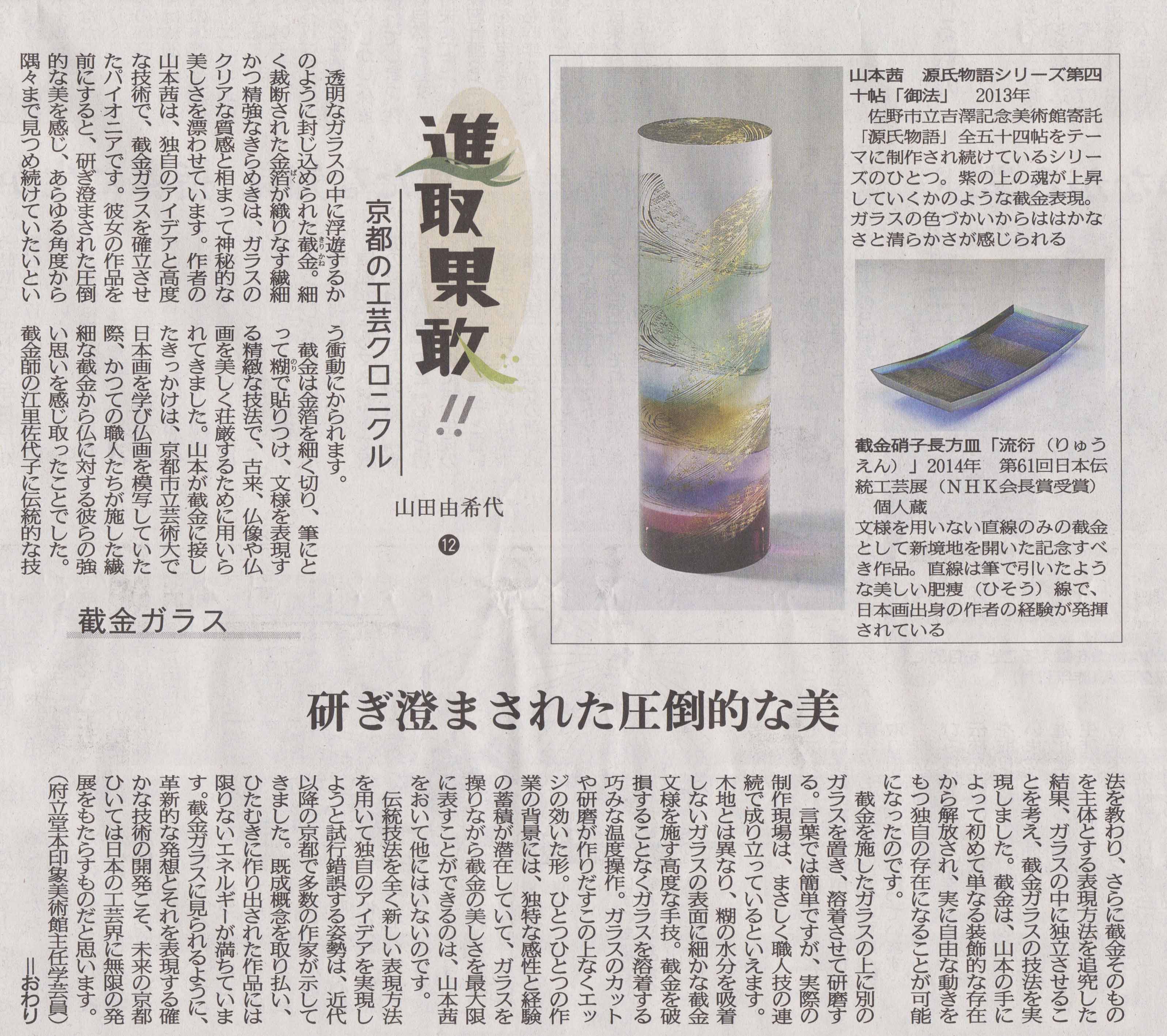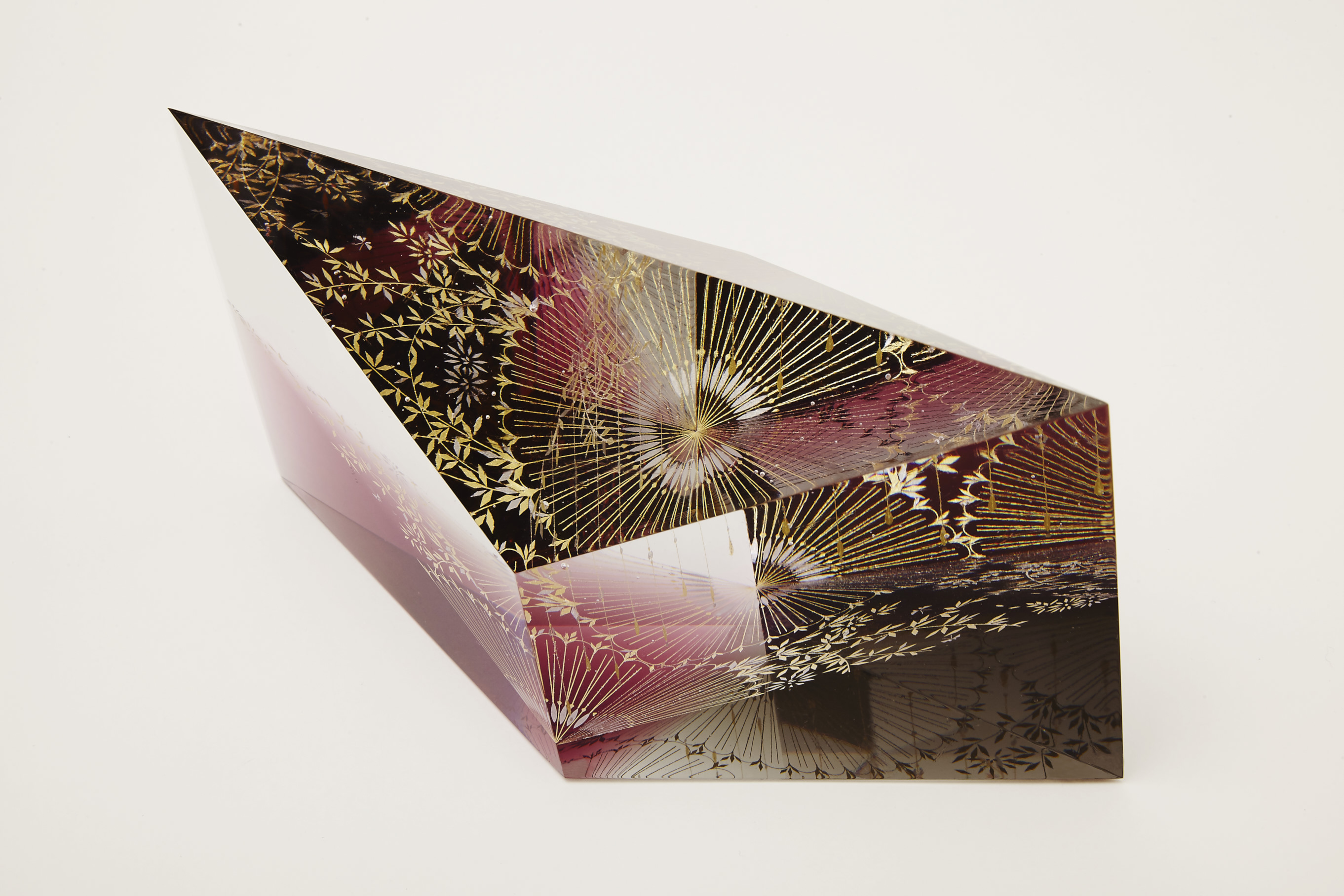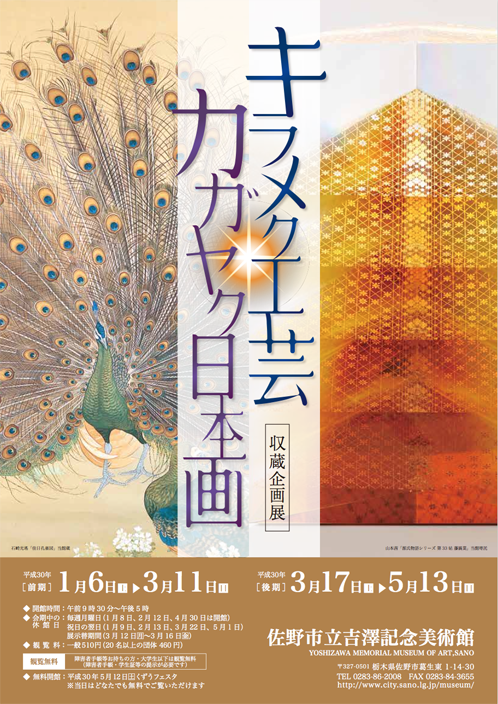The Kirikane is entrapped in clear glass, as if suspended mid-air. Cut in to fine strips, the gold foil creates a delicate yet compelling gleam, which emits a mysterious beauty when combined with the clear quality of the glass. Artist Akane Yamamoto is a pioneer who created the Kirikane Glass through her own distinctive ideas and highly advanced technique. Upon seeing her work, one is able to feel the overwhelming refined beauty, and is overcome by an impulse to look at every corner of the piece from various angles.
Kirikane is an elaborate technique of creating traditional patterns, where gold foil is cut into fine strips and applied with a brush and adhesive. It was used in ancient Buddhist statues and paintings to make them beautiful and majestic. Yamamoto first became interested in Kirikane when she was studying Nihonga(Japanese-style painting) at Kyoto City University of Arts and replicating a Buddhist painting. She felt the ancient masters’ strong devotion to the Buddha through the delicate Kirikane work they had applied. As she apprenticed under the Kirikane master Sayoko Eri and learned the technique, she began searching for a method of expression that allowed the Kirikane itself to become the focus of a piece. She then arrived at the idea of suspending it in glass, and completed the technique of Kirikane Glass. Through Yamamoto’s efforts, Kirikane was freed from being a mere element of decoration for something else, to embrace the possibility of being a truly free-form and unique existence.
After the Kirikane is applied upon the surface of a glass form, it is topped with another glass form, welded together, and polished. This may sound simple, but in reality, production is only possible through continuous mastery. A highly advanced level of skill is required to apply the delicate Kirikane patterns on the glass surface, which unlike wood, cannot absorb the moisture of glue. Further expertise is required to control the temperature in order to weld the glass together without damaging the Kirikane. The glass is then cut and polished to create the intense forms and sharp edges. Behind each process lies a distinct sensibility and an accumulation of experience, and thus, Akane Yamamoto is the sole individual who can bring forth the ultimate beauty of Kirikane while also skillfully manipulating glass.
Many artists in modern and present day Kyoto have showcased their interest in utilizing traditional techniques to achieve completely new ways of expression, repeating trial-and-error in order to realize their own unique ideas. Work that has been made free of preconceived notions carry limitless energy. As has been proved through the Kirikane Glass works, innovative ideas and the development of exceptional techniques to express them is what will bring boundless growth to the future of Kyoto, as well as the world of Japanese artistic craft.
Caption
Akane Yamamoto, The Tale of Genji Series, Chapter 40 “Minori”, 2013
Deposited at Yoshizawa Memorial Museum of Art, Sano
A piece from a series of work based on each of the 54 chapters of The Tale of Genji. The Kirikane expresses Murasaki no Ue’s soul ascending. The colors used in the glass convey impermanence as well as purity.
Akane Yamamoto, Kirikane Glass Rectangular Plate “Propagation”, 2014
61st Japan Traditional Art Crafts Exhibition Private collection
A notable piece in which the Kirikane design is composed solely of straight lines instead of patterns, marking a new frontier. The lines vary in width as if drawn with a brush, showcasing the artist’s skills from her Nihonga background.


